Weed identification
Weeds are the unwanted plants that always seems to appear in our lawn when and where we don’t want them. Many weeds are acceptable grasses and are lawns themselves. While many of us are happy to just see green, addicts want their lawn consistent and pure with one or two species of grass. Read More
At Lawn Addicts, we specialise in weed identification and can help recommend the best herbicides and lawn care products for warm and cool season grass weeds.
There are many types of weeds. Easy control is either manual selection with hand removal or painting a general-purpose non-selective herbicide like a Glyphosate base product. Or we can use a selective herbicide to do the work for us, but the use of them involves knowledge. Firstly, of what weed you have, and secondly, but equally importantly, what lawn you have.
While one herbicide registered to work on a weed may be okay in one lawn, it may suppress, damage or even kill other lawns. Turf identification is an important aspect of weed treatment.
Weeds are identified into a few categories:
- broadleaf weeds
- grass weeds
- sedges and bulbs.
Broadleaf weed identification
“Broadleaf” weeds vary a great deal and are a very large group, however they essentially all include a broad leaf. Lawn Addicts can supply a variety of broadleaf weed herbicides to suit different grass types.
Grass weed identification
Certain types of grass can act as weeds and take over your lawn. We can help with zoysia and buffalo grass weed identification and treating cool season grass weeds.
Sedges and bulbs
Sedges can be tough to control, but we can help you choose a selective herbicide based on different grass varieties.
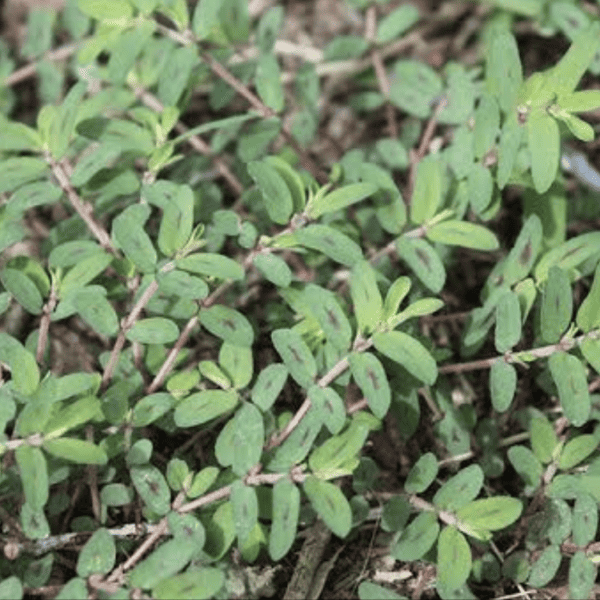
Spurge
Commonly referred to Prostrate Spurge, Creeping Spurge and Spotted Spurge. It's an aggressive prostrate or low growing weed, resembling a mat up to a meter in diameter when established. Has opposing leaves along the stems and runners, and often seen with a darker spot in the middle of each leaf. The runners and stems are soft, red to brown in colour, sappy with a milk appearance when cut. A very common weed found in bare or thin lawns, it's resistant…
Read More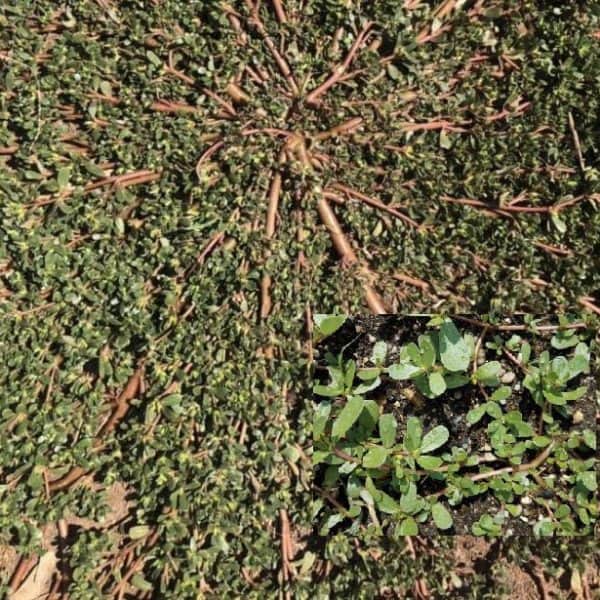
Purslane/Portulaca
Purslanes and Portulaca are a low growing 0 to 200mm high, a prostrate to decumbent often flowing succulent annual weed. Stems and runners are normally soft and pink to brown in colour. They are very common in a variety of soil types especially after having been recently disturbed. There are many varieties of this weed across Australia some native and introduced widely naturalised and a prolific seeder. Grows well in temperate to tropical regions. Seed mostly germinates around autumn, colonies…
Read More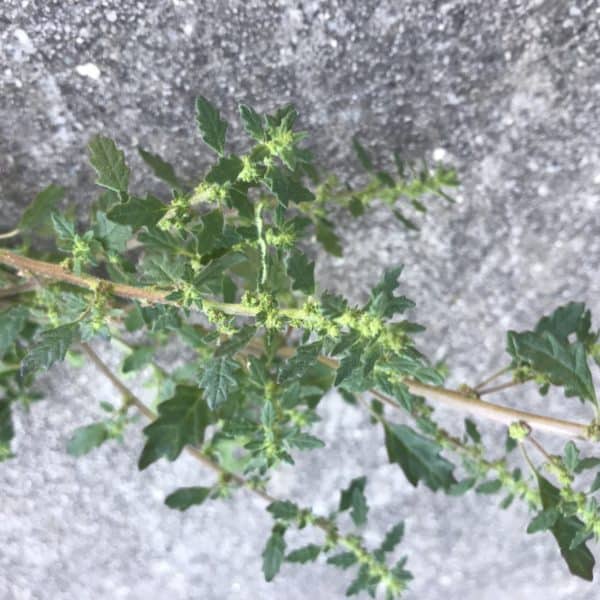
Crested Goosefoot
Crested Goosefoot also know as Crested Crumbweed, is a lower growing prostrate or spreading weed, it can grow 30cm tall. Leaves leave are alternating along the reddish stems and when crush are quite aromatic. Stems are not woody and spreads quickly from the crown and one main thick tap root, from this numerous course roots grow laterally. Leaf sizes are normally small to 20mm long with the normal irregular goosefoot shape which can be hairy, sticky, flat with toothed or…
Read More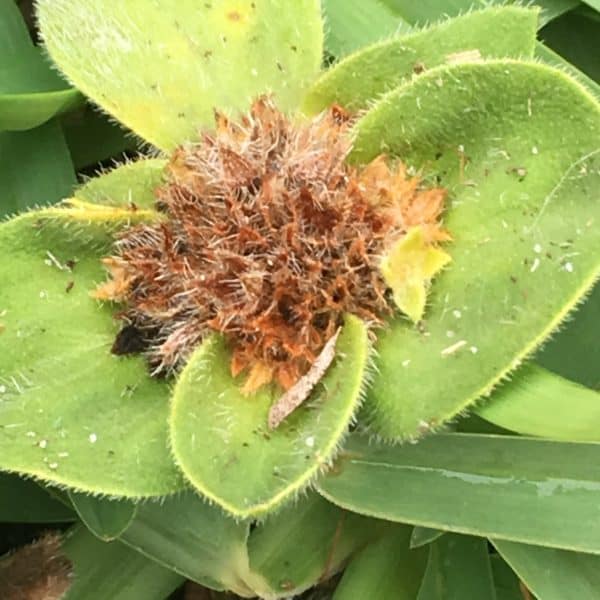
Richardia Brasiliensis (White Eye)
Richardia is an annual spreading prostrate weed, often growing to 50-60 cm across and 10 cm tall. This species of Richardia is quite common in Australia it has a thick white central tap root usually contorted from the crown of the plant. The crown is made up of green prostate stems, many branched with very small white hairs. Leaves occur in opposing pairs and are connected to the stem with a ridge of numerous broad irregular bristles. The leaf has…
Read More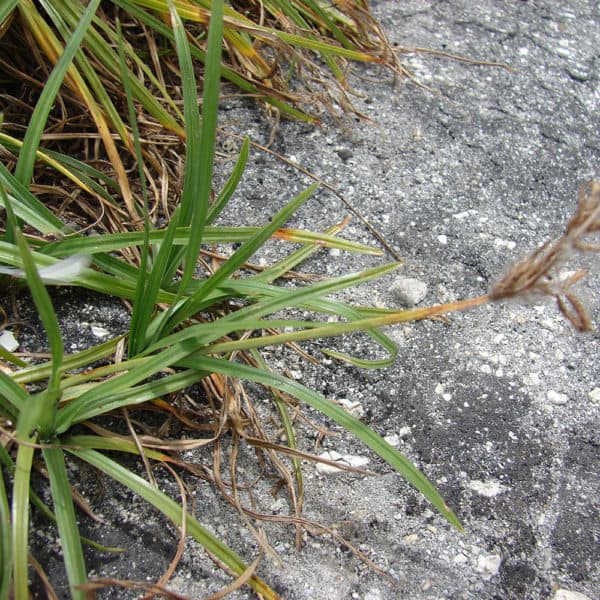
Nutgrass (Cyperus Rotundus)
Nutgrass is a perennial rapidly spreading grass-like sedge with flat, tapered and corrugated foliage. The stem is triangular in cross-section, a feature which is unique to sedges. The name nutgrass comes from the nut-like tubers found on rhizomes under the surface. These “nuts” serve as energy storage for the weed which are the reason the weed is difficult to control. The weed seeds from summer through to autumn, with yellow-brown seeds arranged in narrow spikes. Nutgrass propagates from both seed…
Read More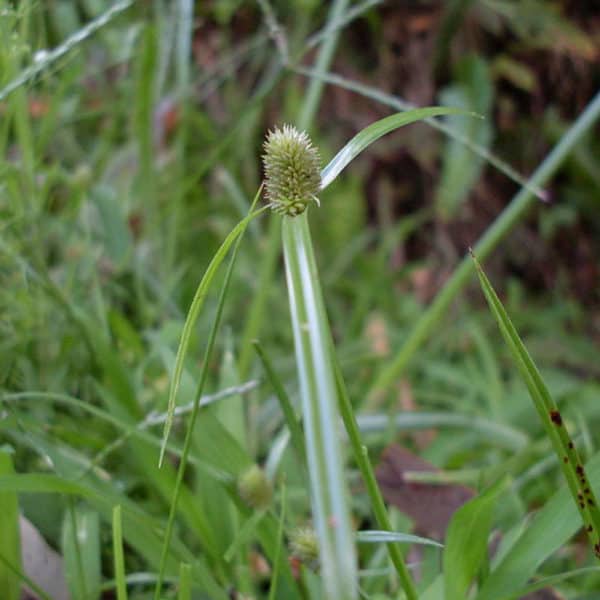
Mullumbimby Couch (Cyperus Brevifolius)
Mullumbimby couch is a perennial grass-like sedge up to 15 cm high with dark green, glossy, strap-like leaves. It has tough, long rhizomes that are red to purple in colour and triangular stems in cross-section which is characteristic of sedges. This sedge is in mostly observed in flower through spring and summer and presents as a single round, compact spike with three short, curved leaves protruding from the base of the seed head. Mullumbimby couch grows best in areas of…
Read More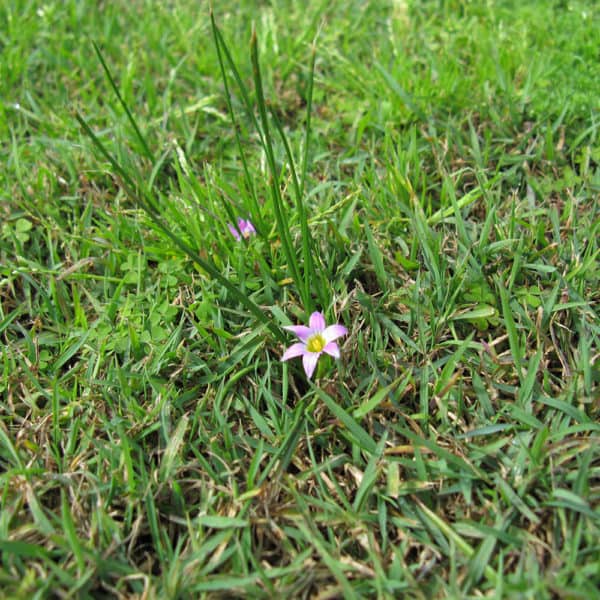
Onion Grass or Guildford Grass (Romulea Rosea)
Onion Grass is a perennial grassy weed with between three and 10 thin, strappy leaves rising from the central base up to 30 cm long. The leaves are up to 2 mm wide with a prominent central midrib that protrudes to create an almost cylindrical leaf blade in cross section in a spear and quite a tough point. Flowering in spring, the onion grass plant produces two to four small flowers per plant that are positioned around the base of…
Read More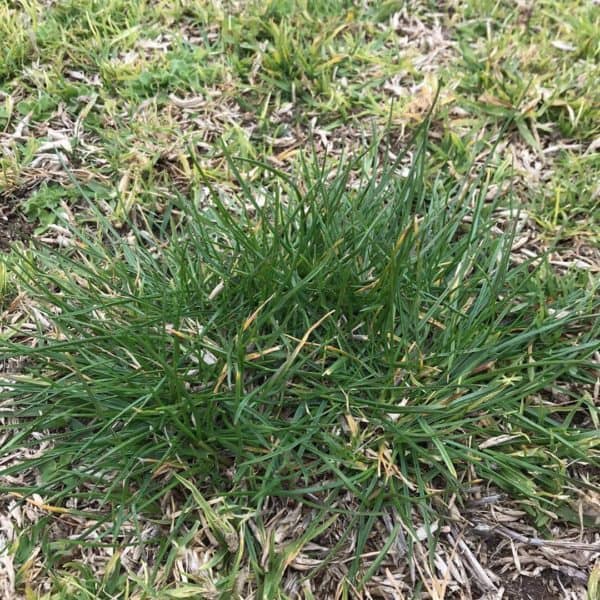
Ryegrass
Ryegrass is a cool season perennial or annual grass with tufted or clustered growth and perennial strains have a glossy dark green leaves while annual strains can be brighter green which both are often purplish at the base. Ryegrass possesses a thin ligule with a folded leaf along its vein and overlapping or clasping auricles. The seed heads appear in spring and early summer as a long, narrow spike with a long cluster of small dark seeds at the top.…
Read More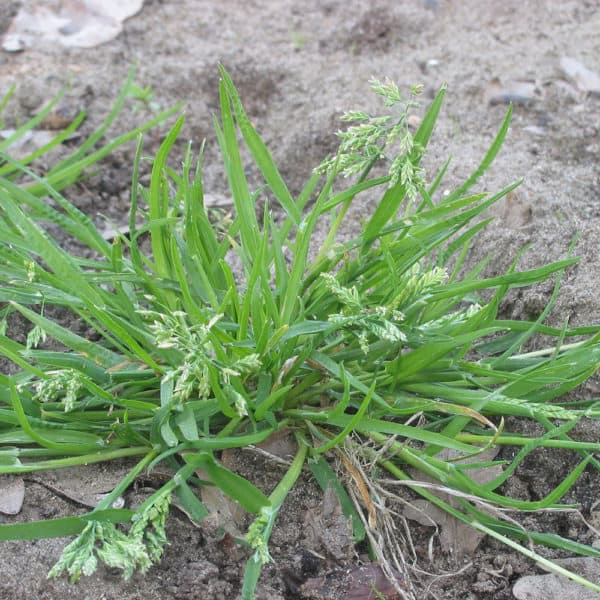
Poa / Wintergrass (Poa Annua)
Poa is a grassy winter annual with perennial and biennial variations. Poa is light green in colour with a tufted or clustered growth habit and a white panicle (flower branch) inflorescence germinating from late winter throughout spring and summer, if conditions permit. Leaf blades are folded along its vein with a “long boat” shaped leaf tips that curl up at the ends. Poa is a very adaptive weed that can thrive in shaded areas and full sun depending on moisture…
Read More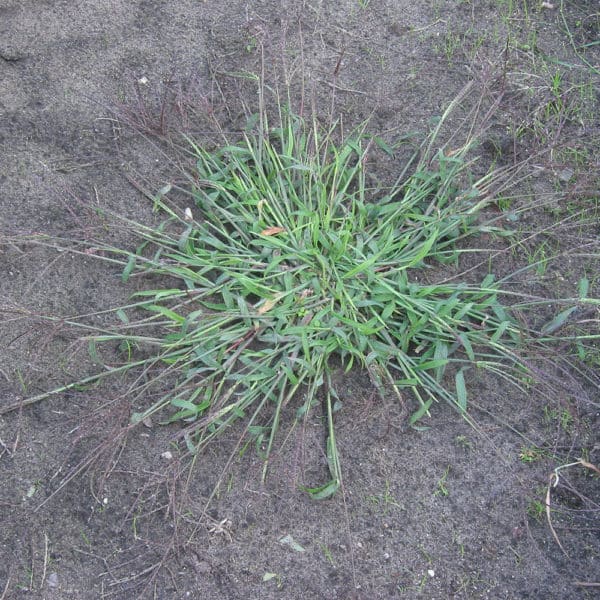
Summer Grass (Digitaria Sanguinalis)
Summer grass is common in Australia’s lawns. It is a very fast-growing weed which sends out its shoots in all directions from its centre and spreads through stolons (above ground runners). Summer grass stems are either brown or red, with thin grey-green leaves and fine vertical seed heads that are spiky. A vigorous seeding plant, summer grass needs to be removed from lawns immediately. It’s like your lawn – lawn mowing has no impact on its control or growth, other…
Read More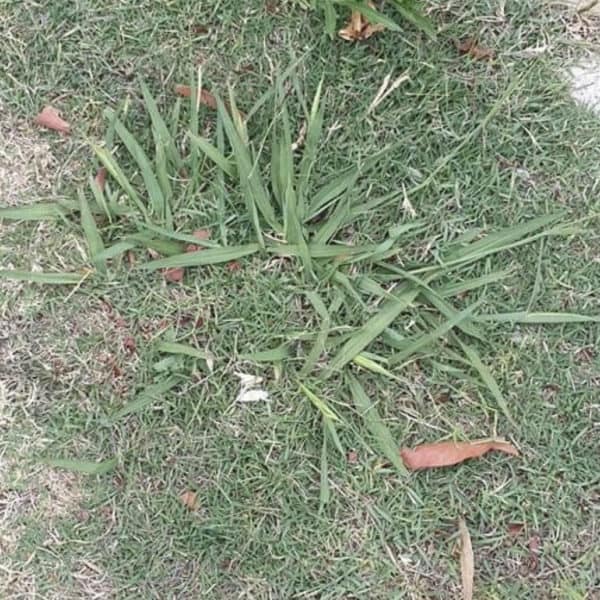
Paspalum
Paspalum is a grassy weed with larger, broader, longer leaves. It grows in a cluster and is quite obvious to see in your turf. It comes in many varieties. Removing paspalum by hand involves digging the plant out of the ground, and the roots must also be removed. Selective herbicides are available to control this weed. These can usually be used on couch, bent grass, fescue and ryegrass lawns, but cannot be used on buffalo, kikuyu or saltene/bahia lawns. Always check…
Read More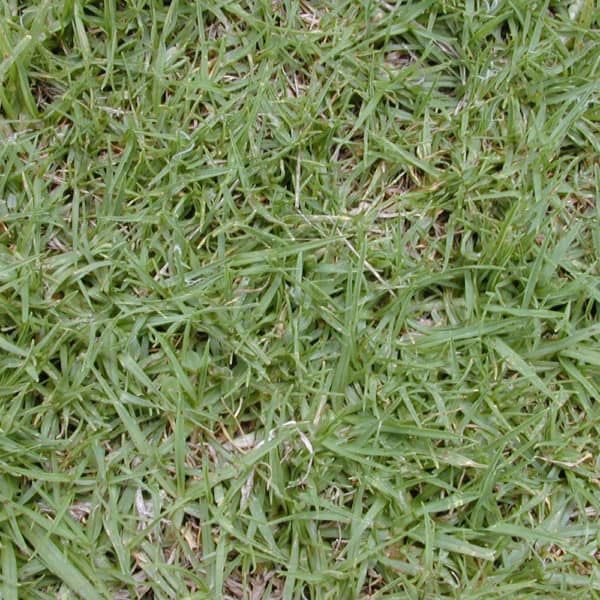
Kikuyu (Pennisetum Clandestinum)
Kikuyu is very invasive of other grasses. Kikuyu is very fast growing, and its fine seed is easily dispersed by the wind blowing seeds from neighbouring lawns. Kikuyu growing in buffalo grass is a common problem. Both grasses are similar, making the kikuyu often unnoticeable in the buffalo, until it's too late and much of the lawn in now kikuyu. Once kikuyu is detected, control is very manual in buffalo grass. Allow the lawn to grow and the kikuyu will…
Read More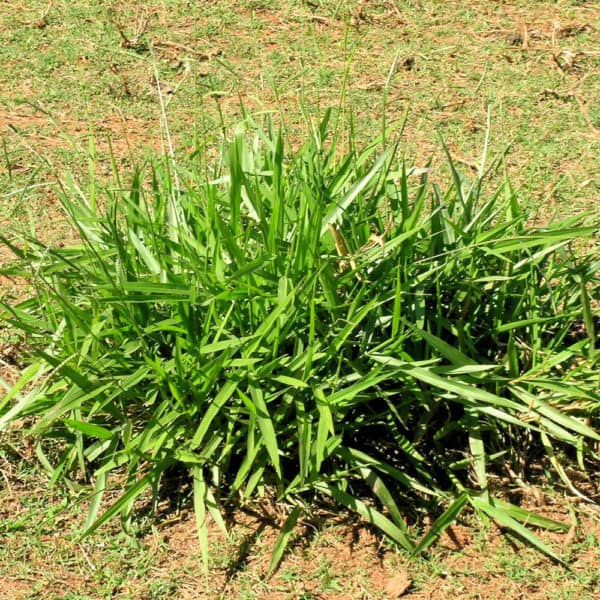
Crowsfoot / Crabgrass (Eleusine Indica)
Crabgrass is nuisance value to lawns everywhere. It is both a prolific seeder and spreader, overtaking lawns as it continues to spread. Removal of this grass weed as soon as possible is important. The crabgrass suffocates your lawn then dies off in winter, leaving bare patches in your dormant lawns. Following spring the bare patch becomes a stronger weed from the previous seasons seeding and the problem continues to deteriorate. Crabgrass is listed as one of the 12 worst weeds…
Read More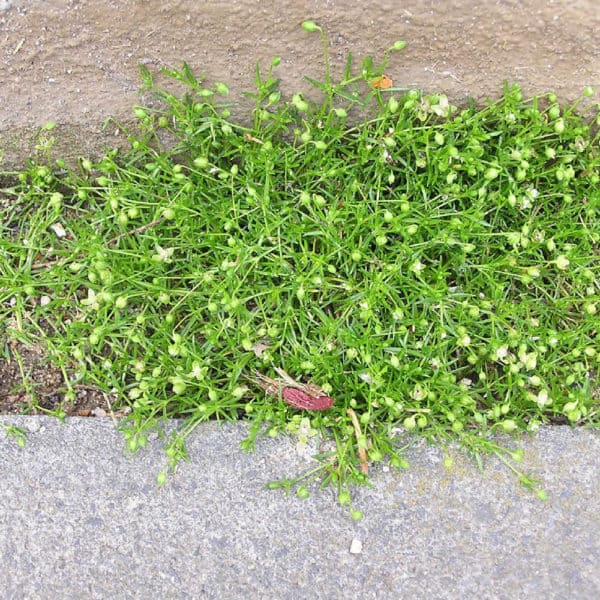
Pearlwort (Sagina Procumbens)
Pearlwort is a dense, low-growing broadleaf weed with smooth, slender stems rooting at the nodes. Oppositely arranged, thin, grassy like leaves up to 14 mm long branch out from the stem at close intervals, not broadleaf in appearance. These heavily branched stems form a mat-like growth habit that forms thick ground cover. Small, inconspicuous flowers appear in spring, summer and autumn, with green sepals and tiny white petals. Flowers remain closed in buds and are visible only briefly as they…
Read More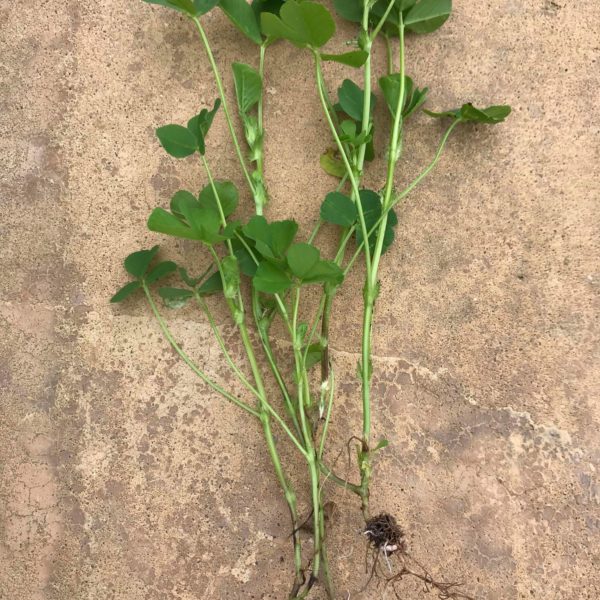
Burr Medic (Medicago Polymorpha)
Burr medic is another of the trifoliate type lawn weeds, meaning its leaves are grouped together in bunches of three. With serrated green leaves, it has long reddish creeping stems, and small groups of pea sized often yellow flowers. It grows prickly burrs, which begin as small green pods and later dry out, becoming brown in colour. Similar trifoliate weeds are clover and oxalis, and these three broadleaf weeds can be easily confused for each other. If you're not sure,…
Read More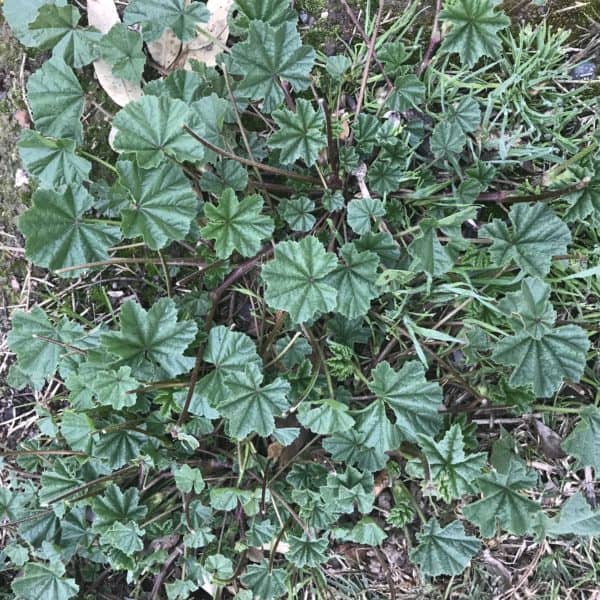
Mallow (Malva Parviflora)
Mallow or marshmallow is native to Europe, Asia and northern Africa but has made itself at home in all Australian states. It grows in every soil type and is commonly seen in disturbed areas such as roadsides, cultivation, around buildings, stock yards, along watercourses and in rundown pastures. At Lawn Addicts, we provide recommended herbicides and lawn care programs to control mallow and other broadleaf weeds.
Read More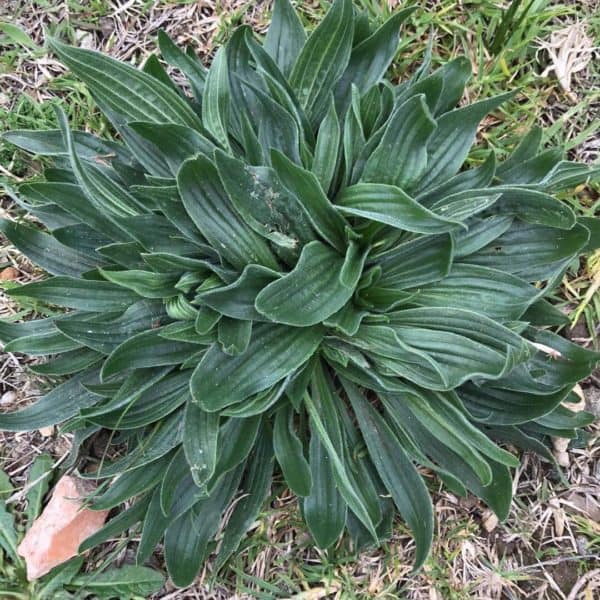
Lambs Tongue/Plantain (Plantago lanceolata)
Lambs tongue, or plantain, is a perennial rosette forming monocot with long, narrow leaves ending in a tapered point. The leaf blades possess distinctive parallel veins and are often twisted or curled along the margins. The seed head is a dense spike produced on an erect, leafless stalk that rises up to 45 cm from the ground. Lambs tongue flowers from mid spring through summer and is a prolific seed producer with seeds carried by wind and water run-off. It…
Read More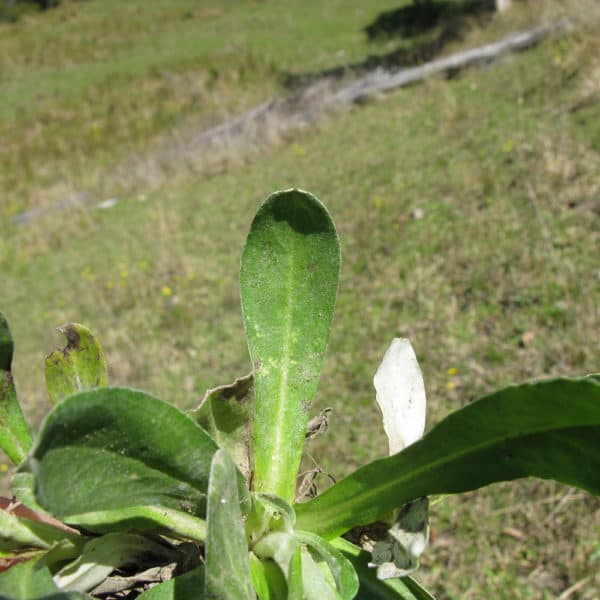
Cudweed or Daisy (Gnaphalium Spp.)
Cudweed is an annual or biennial weed with a rosette forming growth habit. The leaves are broad and obovate (egg shape) in shape and possess a dull green upper surface with a soft, white or silver hairy underside. Growth begins as basal rosette forming stems with upward growth occurring as the plant matures. Cudweed flowers typically form from spring throughout summer and are purple to pink in colour. Depending on correct identification of turf, the team at Lawn Addicts recommends…
Read More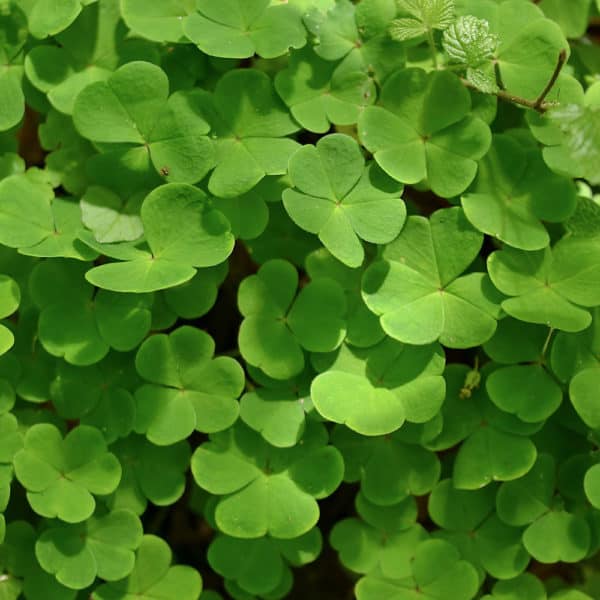
Oxalis (Oxalidaceae)
The Oxalis family of weed is one of the largest broadleaf weed families. Common varieties encountered are Soursob, Purple Oxalis, Wood Sorrel, Creeping Oxalis, and many more names. With more than 30 varieties in Australia, not all are weeds many are ornamental plants. Oxalis is often mistaken for clover. However, while they both can have a similar appearance with trifoliate sectioned leaves, oxalis is easily distinguishable by having heart-shaped leaves compared to the oval-shaped leaves of clover. Like clover, oxalis…
Read More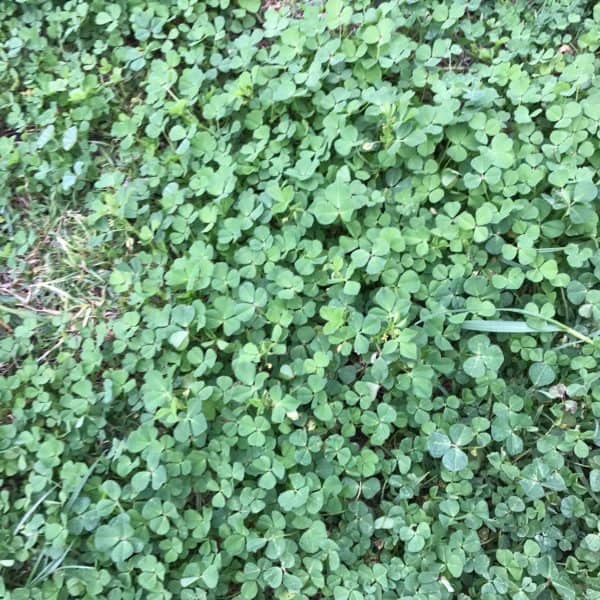
Clover (Trifolium Repens)
Clover is noticeable by its ball-like flowers, which can often be partially yellow or beige colouring. It has trifoliate green leaves and rapidly growing green stems which grow quickly to spread the weed very efficiently, often becoming large weeds. As well as propagating new plants, it will take control of a lawn in no time if left untreated. Clover is a nuisance when it invades lawns, as it is very noticeable. Clover is difficult to control as it easily grows…
Read More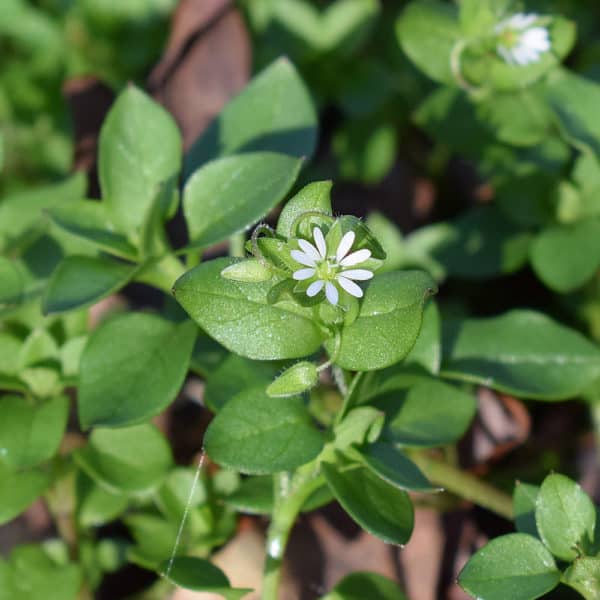
Chickweed (Stellaria Media)
Chickweed is a common weed. With many varieties, ‘Common Chickweed’ is the most encountered. A small plant with shiny leaves with multiple stems, Chickweed produces a single white flower on each stem. Its invasiveness into healthy lawns is rare and it doesn’t like to compete. Chickweed prefers to germinate and grow barer patches of turf. Chickweed cannot recover from the loss of its foliage, so regular mowing of lawns ensure its eradication – which is another reason chickweed is rarely…
Read More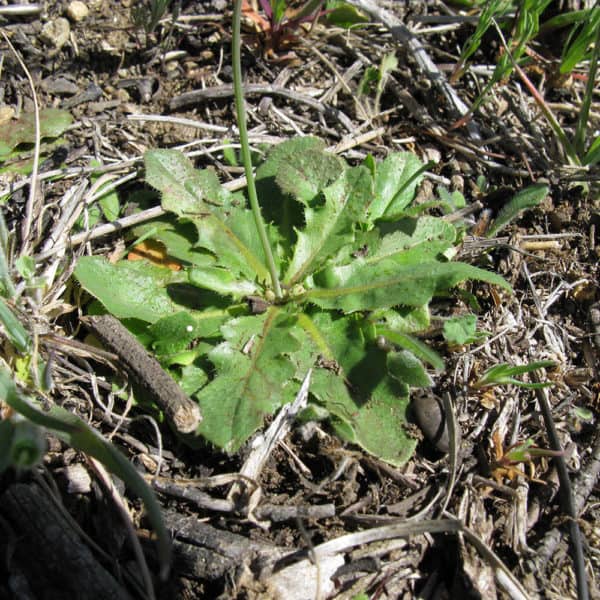
Catsear (Hypochoeris Radicata)
Catsear, also known as flatweed, is similar to dandelion but are different species. The two plants look similar, have similar features, and are also treated the same. The lifecycle of the Catsear and dandelion can be controlled by regular lawn mowing whenever its flowers or seed heads are apparent. By constant removal of its seeds, the weed misses its only means of reproducing. Hand weeding is also an easy and effective control. Both selective and spot application of non-selective herbicides can…
Read More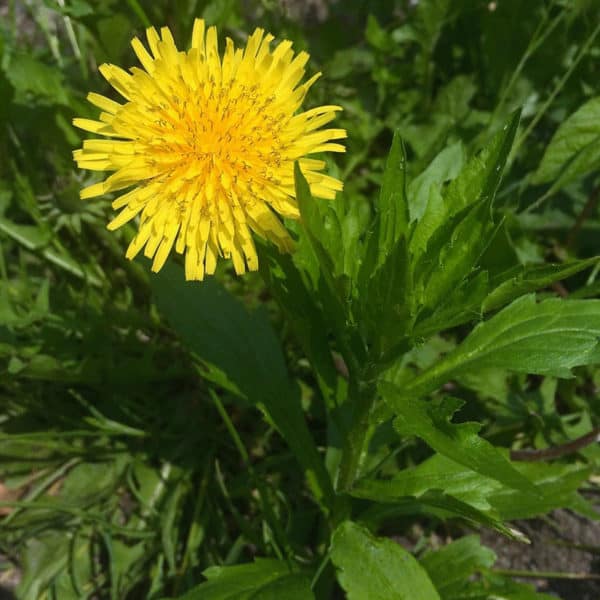
Dandelion (Taraxacum Officinalis)
Dandelion is perennial weed which often become a nuisance in turf. It is quite drought tolerant with a deep tap root able to withstand dry conditions beyond what the turf can handle. On maturing, the yellow flowers become the fluffy white balls we know as “fairies”. The cycle of the dandelion can be controlled by regular lawn mowing whenever its flowers or seed heads are apparent, similar to capeweed with constant removal of its seeds. Hand weeding is easy and…
Read More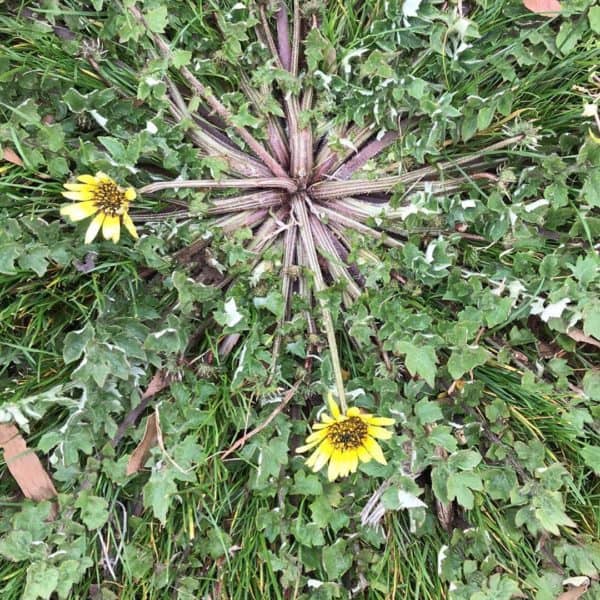
Capeweed (Arctotheca Calendula)
Capeweed is an annual cool season broadleaf weed, low to the ground with light green leaves and distinctive large serrated outline, while the underside of the leaves is usually a textured, silvery-white colour. Germination usually commences in mid to late autumn, and the lifecycle continues until late spring or early summer when it sends out its single yellow flower with a black middle, before going to seed. The continuing lifecycle of Capeweed can be controlled by regular mowing and prevention…
Read More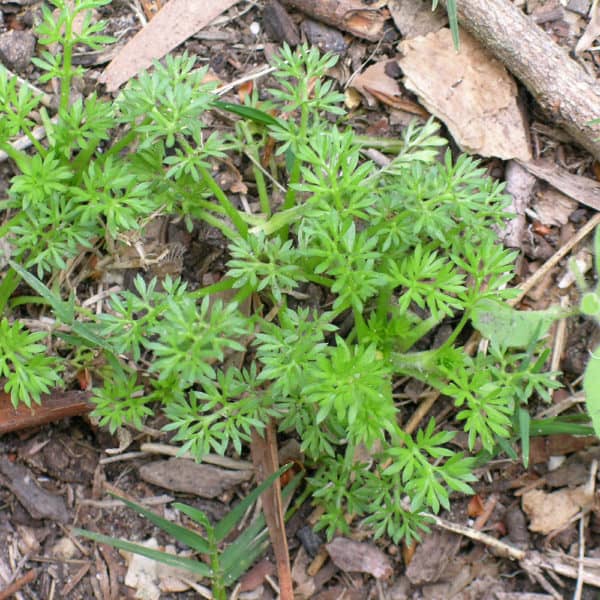
Bindii (Soliva Sessilis)
Bindii is a low growing weed. It produces a single flower in the middle, and at maturity produces a prickly seed pod we all hate. Bindii can be easily treated and removed by common and easy methods. The continuing lifecycle of bindii weeds really can’t be controlled by regular lawn mowing. Mowing doesn’t control the lifecycle of the weed as seed heads and flowers are below almost all mowing heights. Hand weeding is an obvious and effective treatment for bindii,…
Read More
